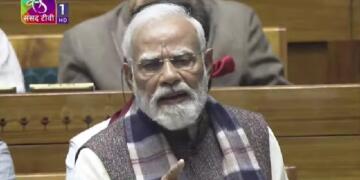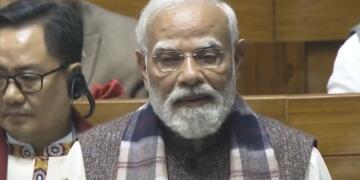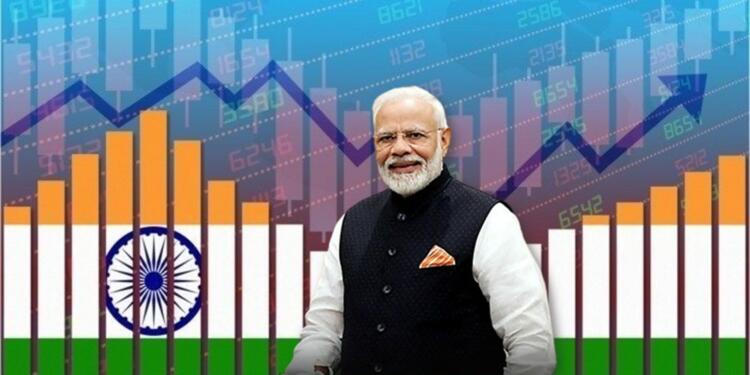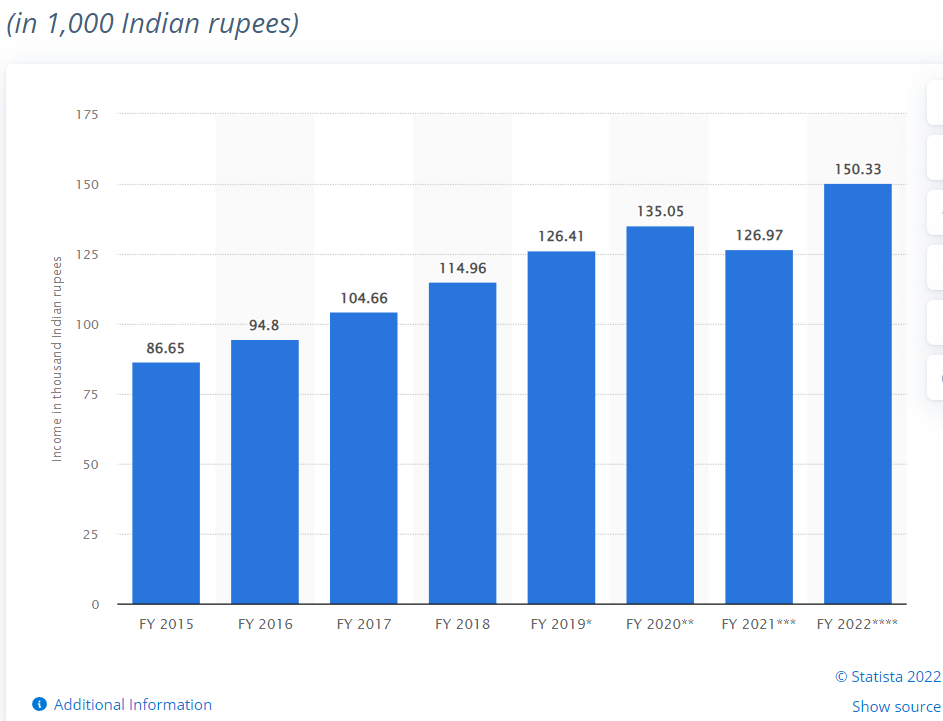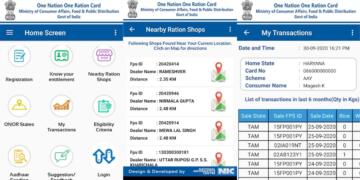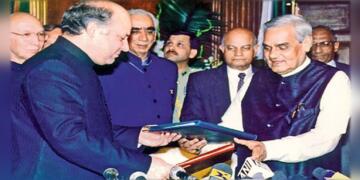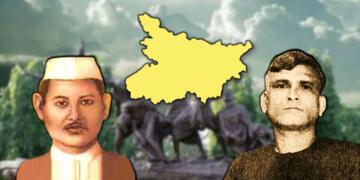Garibi Hatao: It sounds ironic, but the more a politician talks about solving any problem, the higher the possibility of it not getting solved. There is a reason behind it. Incremental and slow progress towards the declared goal of governance is a sure-shot way to get votes. Politicians move the ‘Overton window’ a bit and people trust them to move it more. That is how Indira’s slogans like “Garibi Hatao” kept changing hands through decades. Then came PM Modi, who just removed the depravity and did not even make a fuss about it.
India’s middle class increasing its share
According to a survey by People Research on India’s Consumer Economy (PRICE), an economic research outfit, middle class households comprise 31 per cent of total households in India. PRICE puts household earning between Rs 5-30 lakhs in the middle-class category. Its predictions suggest that the number is going to balloon in coming decades. Middle class households as a percentage of total households are expected to touch 63 per cent in 2047.
Rajesh Shukla, MD and CEO of PRICE said, “By 2047, if political and economic reforms have their desired effect, the India income pyramid will have a smallish layer at the bottom, a huge bulge of the middle class and a big creamy ‘rich’ layer on top.”
The rise of the middle class is aptly supported by corresponding rise in India’s super rich people. Currently, India has more than 18 lakh families categorised as super rich. Maharashtra houses the most number of super rich households with more than 33 per cent of India’s super rich residing there. Delhi, Gujarat, Tamil Nadu and Punjab are other states in the top 5.
Remarkably, the exponential increase in household wealth is indicated by average national income over the years as well. In 2015, an average Indian earned Rs 86,650 per year. The number has gone leaps and bounds during the Modi government.
By the end of FY 2020, the average Indian was earning Rs 1,35,000 per year. It nosedived to Rs 1,27,000 in FY 2021 due to covid, but took a sharp leap and reached to Rs 1,50,330 in FY 2022.
Looking at evolution of “Garibi” as political tool
Certainly, these numbers are not big if you look at them from global standards. However, that is not the right perspective since India has suffered historical injustices, firstly from foreign powers and then vote bank politics.
After we got political independence, every politician talked about poverty alleviation, but rarely anyone intended to do it. They just wanted power on the back of “Garibi Hatao”. Nothing else explains taking the much-denigrated socialism route to eliminate poverty. Only credibility socialism has is that of giving unchecked powers to rulers.
That is what happened during the emergency era. Insertion of the word Socialist in the Preamble and introduction of emergency by the same politician (Indira Gandhi) is not a coincidence.
As politicians, bureaucrats and people in power circles kept getting power, poverty in India increased from 47 per cent to 56 per cent between 1951 and 1974. It is around this time that the “Garibi Hatao” slogan gained prominence in power circles. Riding on the back of these populist slogans, unhinged power was usurped.
Garibi Hatao should have meant that poverty is eliminated from India altogether. Instead, the growth was too slow. It took 25 years for India to reduce the poverty incidence to 26 per cent. Mind you, this number is in percentage terms as absolute numbers kept increasing with increasing population. In other words, there was not much progress.
Atalji’s era and policy paralysis of UPA
After 2000, India trusted BJP with power and Atalji made some efforts with his initiatives like shining India, Sarva Shiksha Abhiyan among others. He could do it only for 4 years as for reasons still unknown, people voted him out of power in 2004.
Next 10 years belonged to UPA and it was an absolute disaster to say the least. Token Schemes like MGNREGA were launched to keep Indian poor on subsistence. There was no whole hearted effort to get them out of the clutches of poverty. The resulting policy paralysis ended up pushing them out of power in 2014.
When Manmohan Singh resigned as Prime Minister, 21.6 per cent of Indians were still under the poverty line (World Bank data). The problems were many folds.
Problems inherited by PM Modi
They did not have jobs because companies were not enthusiastic about investing in India. Certainly, policy paralysis due to UPA scams was one reason behind it, but there is more to the story. 67 years after independence, successive central governments were not able to ensure that India is clean. Roads used to be filled with dust and other kinds of dirt including solid and liquid waste. Most Indians did not have much sense about cleanliness. Simply because, successive governments kept them relatively uneducated and poor to make them dependent on them.
These people were so dependent on them that a huge section of the population did not even have their own gas connection. Apparently, absence of gas connection is directly attributable to poor quality of roads connecting urban and rural areas. Moreover, for gas connection you need a resident address. Previous governments had failed in that. Indira Awas Yojana was known more for pilferage and people using its money to satisfy their instant dopamine demands than new houses.
All these problems kept people on tenterhooks. These people were hungry. These people were ill, both physically and mentally. They used to visit local health care centres on a frequent basis. A lot of them died, leaving their family members in worse economic condition. There was no concept of saving any money, not even Rs100 they earned from digging pits at MGNREGA.
“Garibi Hatao” – Top-down solution
The problem was so much part of the system that only a top-down solution could turn it around. For that, a leader with enough governance experience and more importantly a leader with good intention was needed. PM Modi filled that gaping hole. With his experience in Gujarat, he understood the importance of having a bank account.
Soon, he launched Jan Dhan Yojana in 2014 itself. By the end of year, 53 percent Indians had personal bank accounts. The number jumped to 80 per cent by the end of 2017 and it is increasing further in spite of Covid hurdle. Women, the less educated and people out of the labour force were the biggest beneficiaries. It has helped bring more than 45 crore Indians in the fold of financial inclusion.
What these bank accounts did was that pushed the poorest section of the population to save money in their bank accounts. As of April 2022, Indian banks have liquidity of 1.7 trillion INR only on the back of Jan Dhan Accounts. These second and bigger purpose these bank accounts served was to reduce corruption. Jan Dhan Accounts helped the government establish a direct connection with the unfortunate poor of India. Now, the government did not have to rely on middlemen (bureaucrats and local politicians) to launch any scheme. It made it easier for the government to transfer government benefits to the beneficiary’s pockets
Garibi Hatao: DBT changed things
That is how schemes like National Employment Guarantee Scheme (MGNREGS), PM-KISAAN National Social Assistance Program (NSAP), Prime Minister’s Matru Vandana Yojana (PMMVY), National Rural Livelihood Mission (NRLM), National Health Mission (NHM), scholarship schemes of various ministries through the National Scholarship Portal (NSP) turned out to be fruitful. In governance parlance, this phenomenon is known as Direct Benefit Transfer.
The money was being funnelled to the common household. However, the spending problem was still there. The BJP governments are infamous for not having much hold on the inflation chart. It is not always wrong though since economic growth requires a healthy level of inflation. The Modi govt, did not halt economic growth to control inflation. Instead, it made sufficient arrangements for poor to save money. Schemes were launched to reduce both short term and long term spendings by poor families.
Poor people are being taken care of
Through, PM Ujjwala Yojna, (PMUY), more than 9 crore free LPG connections have been handed over to BPL families. Under Pradhan Mantri Awas Yojana (PMAY), more than 3 crore houses have been constructed. People living in these homes do not need to worry much about their health expenditure as well. Government is taking care of these expenses through the PM Jan Arogya Yojna, (PMJAY). More than 14 crore people are directly benefiting from it.
Moreover, the government is also trying to ensure that visiting hospitals for medical emergencies is the last option for someone. Through, Jal Jeevan Mission, 50 per cent of Indian households have got clean tap water connections. Food security is getting ensured through various schemes under the National Food Security Act. When a situation arises, the government makes extra arrangements for food security as well. One such time was Covid. Due to factories being shut, there was risk of both demand and supply being down. Supply was left on to the private sector, the government just made sure that poor people do not spend their valuable savings on food. It launched Pradhan Mantri Garib Kalyan Yojana (PMGKAY).
It provided free food to more than 80 crore Indians and is still continuing. The scheme drew praise from the IMF. IMF has said that PMGKAY ensured that in spite of the loss in income due to lockdowns, Indians do not have to spend from their savings. This ascertained that the number of people living in extreme poverty in India did not escalate.
No wonder, when the rest of the world is suffering from an extreme economic crisis, India is one of the few spots of brilliance. Beijing, London, Washington, Brussels; all have either fallen or are on quick downward trajectory, but not New Delhi. Single reason behind it is controlling poverty.
Support TFI:
Support us to strengthen the ‘Right’ ideology of cultural nationalism by purchasing the best quality garments from TFI-STORE.COM


